![]()
![]()
![]()
Use LEFT and RIGHT arrow keys to navigate between flashcards;
Use UP and DOWN arrow keys to flip the card;
H to show hint;
A reads text to speech;
30 Cards in this Set
- Front
- Back
- 3rd side (hint)
|
Prokaryotic organisms
|
Single-celled organisms e.g. bacteria
|
|
|
|
Eukaryotic organisms
|
Multicellular organisms e.g. animal and plant cells
|
|
|
|
Function of Plasma membrane (cell surface membrane)
|
- Regulates movement of substances into+out of cell
- Receptor molecules to respond to chemicals like hormones |
Surrounds the cell
|
|
|
Function of Cell wall
|
- Supports plant cells
|
Only in plant cells
|
|
|
Function of nucleus
|
- Chromatin made from proteins + DNA (DNA responsible for controlling cell's activities)
- Nucleolus makes ribosomes - Pores allows substances to move between nucleus and cytoplasm |
3 functions - chromatin, nucleolus and pores all have jobs
|
|
|
Function of Lysosome
|
- The containing digestive enzymes:
1. digest invading cells 2. break down worn out components of the cell |
Enzymes
|
|
|
Function of ribosome
|
- Site where proteins are made
|
|
|
|
Function of Rough Endoplasmic Reticulum
|
- Folds + processes proteins (that were produced by the ribosomes)
|
Think about what the ribosomes are responsible for
|
|
|
Function of Smooth Endoplasmic Reticulum
|
- Synthesises and processes lipids
|
|
|
|
Function of Vesicle
|
- Transports substances in+out of cell and also between organelles
- Formed either by Golgi Apparatus, eR, or at cell surface |
Transports
|
|
|
Function of Golgi Apparatus
|
- Processes & packages new lipids and proteins
- Makes lysosomes |
|
|
|
Function of Mitochondrion
|
- Site of aerobic respiration, where ATP is produced
|
Animal cells
|
|
|
Function of Chloroplast
|
- Site where photosynthesis takes place
- Can take place in grana (stacked thylakoid membranes) or stroma (thick fluid) |
Plant cells
|
|
|
Function of centriole
|
- Involved with seperation of chromosomes during cell division
|
|
|
|
Function of Cilia
|
- Microtubules allow cilia to move
- This movement allows substances to move along cell surface |
Movement
|
|
|
Function of Flagellum
|
- Microtubules contract to make flagellum move
- Flagella are like motors allowing cells to propel forward |
Think of the sperm cell
|
|
|
Structure of Plasma membrane
|

- Made mainly of lipids + proteins
- Found on surface of animal cells and inside cell wall of plant cells |
|
|
|
Structure of Cell wall
|
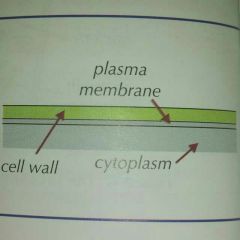
- Made mainly of carbohydrate cellulose
- Rigid structure surrounding plant cells |
|
|
|
Structure of Nucleus
|
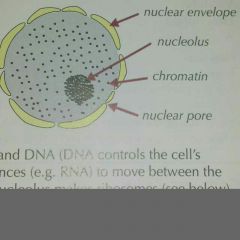
- Large organelle surrounded by nuclear envelope (has many pores)
- Nucleus contains chromatin & often a nucleolus |
|
|
|
Structure of Lysosome
|

- Round shaped
- Surrounded by a membrane - No clear internal structure |
|
|
|
Structure of Ribosome
|

- Very small
- Either: 1. floats free in cytoplasm, or 2. attached to rER |
|
|
|
Structure of Rough Endoplasmic Reticulum
|
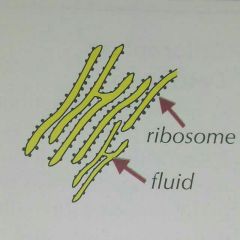
- System of membranes enclosing a fluid-filled space
- Surface covered in ribosomes |
|
|
|
Structure of Smooth Endoplasmic Reticulum
|
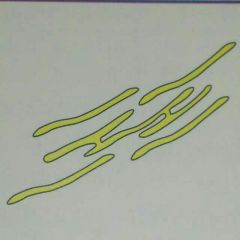
- Like rER but has no ribosomes attachrd
|
|
|
|
Structure of Vesicle
|
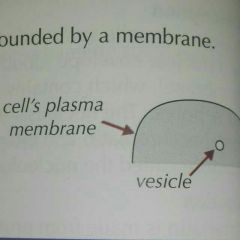
- Small fluid-filled sac in cytoplasm
- Surrounded by membrane |
|
|
|
Structure of Golgi Apparatus
|
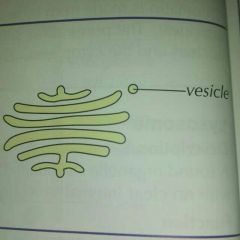
- Group of fluid-filled sacs
- Vesicles often at edge of sacs |
|
|
|
Structure of Mitochondrion
|
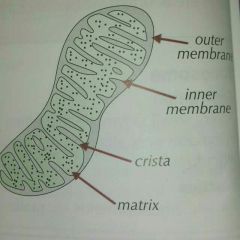
- Usually oval-shaped
- Double membrane - inner one is folded to form structures called cristae - Inside is called matrix, contains enyzmes involved in respiration |
|
|
|
Structure of Chloroplast
|
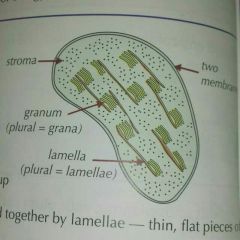
- Small, flat structure found in plant cells
- Surrounded by double membrane - Contains thylakoid membrane: 1. grana - stacks of the membrane 2. lamella - thin, flat pieces of membrane linked with grana |
|
|
|
Structure of Centriole
|
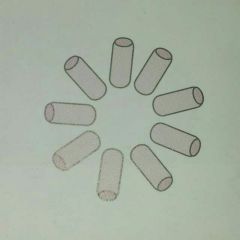
- Small, hollow cylinders
- contains ring of microtubules (tiny protein cylinders) |
|
|
|
Structure of Cilia
|

- Small, hair-like structures
- Found on surface membrane of some animal cells - Ring of 9 pairs of microtubules inside, 1 single pair in the middle |
|
|
|
Structure of Flagellum
|
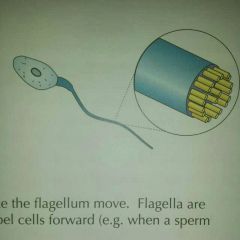
- Are like cilia but longer
- Stick out from cell surface - Surrounded by plasma membrane - Similar to cilia - 9 microtubules pairs, 2 in centre |
|

